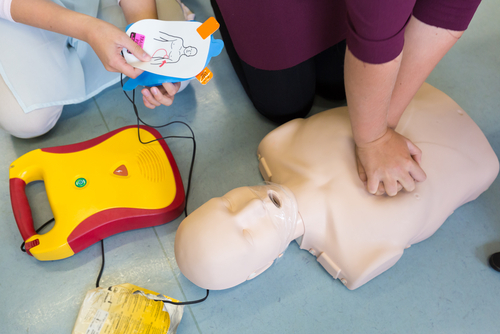Automated external defibrillator may double cardiac arrest survival
IANS Feb 27, 2018
Survival from cardiac arrest doubles when a bystander is able to step in to apply an automated external defibrillator (AED) before the arrival of medical help, researchers say.

An AED is a portable electronic device that automatically diagnoses the life-threatening cardiac arrhythmias and treats them through defibrillation -- the application of electricity which allows the heart to re-establish an effective rhythm.The findings showed that cardiac arrest patients who received a shock from a publicly-available AED that was administered by a bystander had 2.62 times higher odds of survival to hospital discharge and 2.73 times more favourable outcomes for functioning than those who first received an AED shock after emergency responders arrived.Without a bystander using AED shock therapy, 70 per cent of cardiac arrest patients either died or survived with impaired brain function, said researchers led by Myron Weisfeldt, from the Johns Hopkins School of Medicine in Maryland.
For the study, an international team of researchers looked at 49,555 out-of-hospital cardiac arrests that occurred in major US and Canada cities. They analysed a key subgroup of these arrests, those that occurred in public, were witnessed and were shockable."Unfortunately, not enough people know to look for AEDs in public locations, nor are they are trained on how to use them," Weisfeldt said.According to the American Heart Association (AHA), use of an AED is the third step in the cardiac arrest chain of survival with the first two steps being to call for medical help (9-1-1) and begin immediate cardiopulmonary resuscitation (CPR).
"First Aid, CPR and AED training need to become part of a larger culture of safety within workplaces," said Michael Kurz, chair of the AHA."We are certainly seeing higher public interest in this training, and our campaign calls upon decision makers in workplaces and popular public spaces such as arenas, fitness centres, hotels, and churches to place AEDs in the same locations as a fire extinguisher," Kurz noted.The study emphasised that bystanders make a critical difference is assisting cardiac arrest victims before emergency responders can get to the scene.
-
Exclusive Write-ups & Webinars by KOLs
-
Daily Quiz by specialty
-
Paid Market Research Surveys
-
Case discussions, News & Journals' summaries